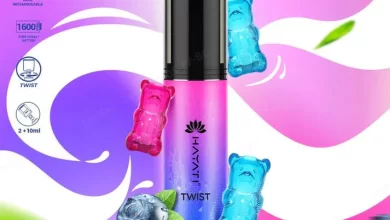The Evolution and Importance of Nursing Scrubs
Nursing scrubs are more than just garments worn by healthcare professionals; they represent a vital aspect of the healthcare environment. Over the years, these uniforms have evolved significantly, reflecting changes in healthcare practices, infection control measures, and professional identity. In this article, we delve into the history, evolution, and importance of nursing scrubs, highlighting their role beyond mere attire.
The Historical Perspective:
The concept of Nursing scrubs attire dates back to the late 19th century when nursing pioneers like Florence Nightingale emphasized the importance of cleanliness and hygiene in healthcare settings. However, it wasn’t until the early 20th century that standardized nursing uniforms emerged, typically consisting of white dresses and aprons symbolizing purity and professionalism.
Evolution of Nursing Scrubs:
The evolution of nursing scrubs took a significant turn in the mid-20th century with the introduction of scrubs made from cotton and other breathable fabrics. These lightweight and comfortable garments replaced traditional uniforms, offering better mobility and ease of movement for healthcare workers. Moreover, the shift towards colored scrubs helped distinguish between different healthcare professions and reduced the risk of cross-contamination.
Infection Control and Hygiene:
One of the primary reasons for the widespread adoption of nursing scrubs was their role in infection control and maintaining hygiene standards within healthcare facilities. Scrubs are designed to be easily laundered at high temperatures, effectively removing bacteria and pathogens that can cause healthcare-associated infections (HAIs). Furthermore, the use of antimicrobial fabrics and fluid-resistant materials has become commonplace, providing an additional layer of protection for both healthcare workers and patients.
Professional Identity and Unity:
Nursing scrubs serve as a symbol of professional identity and unity within the healthcare community. They create a sense of belonging and solidarity among healthcare professionals, regardless of their roles or specialties. Moreover, the standardization of scrubs helps patients identify healthcare workers easily, fostering trust and confidence in the caregiving process.
Comfort and Functionality:
Comfort is paramount for healthcare professionals who often work long shifts in demanding environments. Modern nursing scrubs are designed with features such as stretch fabrics, adjustable waistbands, and breathable panels to ensure maximum comfort and functionality. These ergonomic designs not only enhance mobility but also contribute to the overall well-being and satisfaction of healthcare workers.
Personalization and Expression:
While standardization is essential for infection control and professional identity, many healthcare facilities allow for personalization and expression through nursing scrubs. From custom embroidery to colorful prints, personalized scrubs offer healthcare professionals the opportunity to showcase their individuality while maintaining professionalism and adherence to institutional guidelines.
Cultural and Diversity Considerations:
In an increasingly diverse healthcare workforce, cultural considerations play a significant role in the design and choice of Nursing scrubs top and pants. Healthcare facilities strive to accommodate the religious and cultural preferences of their staff members by offering alternative uniform options that align with their beliefs and traditions. This inclusivity fosters a supportive and respectful work environment where every healthcare professional feels valued and respected.
Environmental Sustainability:
As the world grapples with environmental challenges, the healthcare industry is increasingly focusing on sustainability initiatives, including the eco-friendly production and disposal of nursing scrubs. From using organic and recycled materials to implementing efficient laundering practices, healthcare facilities are exploring ways to minimize their environmental footprint without compromising on quality or safety standards.
Conclusion:
Nursing scrubs have come a long way from their humble origins as white uniforms to become indispensable elements of the modern healthcare landscape. Beyond their role as attire, scrubs symbolize professionalism, infection control, and unity within the healthcare community. By prioritizing comfort, functionality, and inclusivity, nursing scrubs continue to evolve to meet the diverse needs of healthcare professionals while upholding the highest standards of patient care and safety.


